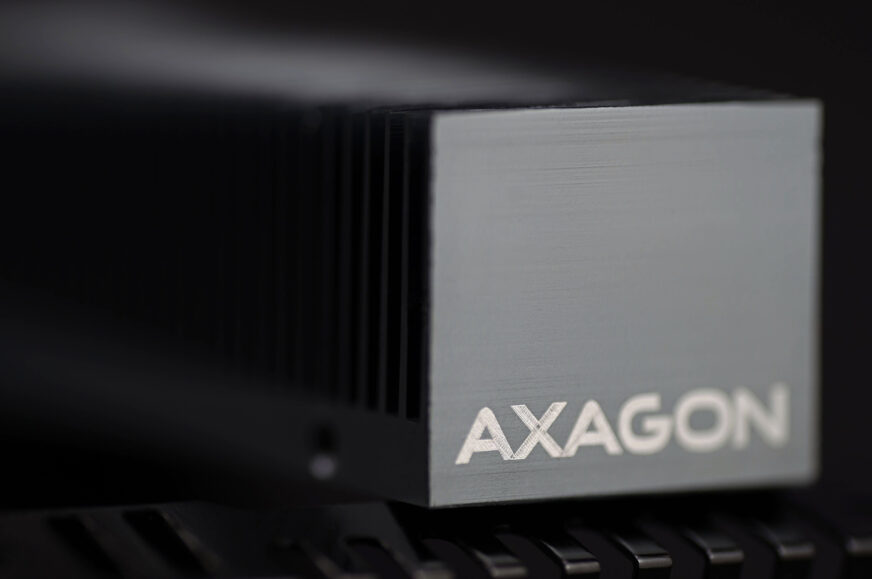Result: SSD temperature
One of the most revered SSD coolers ever. With the CLR-M2XT, Axagon opted for a transverse fin layout, which makes this cooler different from all the others (within Axagon). The fins are naturally shorter and there is less surface area per one, but again there are more of them and to achieve the highest cooling performance the designers tried to work well with the height as well. But, again, in a way to maintain as much compatibility as possible.
Result: SSD temperature
Continue: Conclusion
Flattr this!









I am using what appears to be the same cooler but with a different name (Jeyi Godfins) in my build, the decision based on tests by BuildOrBuy on YouTube: https://www.youtube.com/watch?v=v5Mc3SGW3e4
In his tests, the results appear to heavily vary between the two orientations he tested. Lying flat, it’s 52C, while rotated by 90 degrees it results in 44C (for reference, the Jeyi iGlacier8, which seems identical to the Axagon M2XL, is 48C no matter what orientation it is in).
Note that the Axagon and Jeyi variants come with different thermal pads. Mine comes with little square pads with different thicknesses, which I careful choose and tested ones that can even out the surface (for example, the DRAM chip is lower so I used slightly thicker pads). The holes on the base allow me to shine a light through and verify that contact is perfect between the heatsink, the pads and the SSD. It’s curious that Axagon chose long pads instead (which I assume are the same as the ones on the M2XL).
This surprises me, since in both cases there is a vertical orientation of the fins. With such a reorientation of the heatsink, where in one case the fins are horizontal and in the other vertical, under certain circumstances, for example in system cooling without fans, the heat will be dissipated from the heatsink faster in the second case (vertical orientation of the fins) compared to when the fins are horizontal to gravity and more heat accumulates under each one.
Assessing the efficiency of passive coolers is extremely complex. When combining different positions with different airflow intensities, we would probably find that the variance in cooling performance can be quite wide. And in different situations there will be different orders of magnitude. The components that are around the cooler then also have an effect on the cooling. The (non-)presence of an expansion card can affect the airflow around the cooler quite significantly. Taking all of this into account, it will certainly drive you crazy and probably unnecessarily so, because very few people will be interested in such analyses. 🙂
In my fully passive system (Noctua NH-P1 w/ i5-11400, Palit GTX 1650 Kalm X, Seasonic Prime Fanless PX450), I have replaced the Axagon CLR-M2XL coolers on my 2 TB Kingston KC2500 and KC3000 drives with these M2XT coolers and both drives no longer hit 70dC under 15 min continuous load at 28dC ambient in a full system stress test scenario. Not a big surprise though, vertical orientation of fins is always better for natural convection.
Yes, for passive builds (i.e. without system fans), a vertical orientation of the fins is beneficial for achieving the highest possible cooling performance.